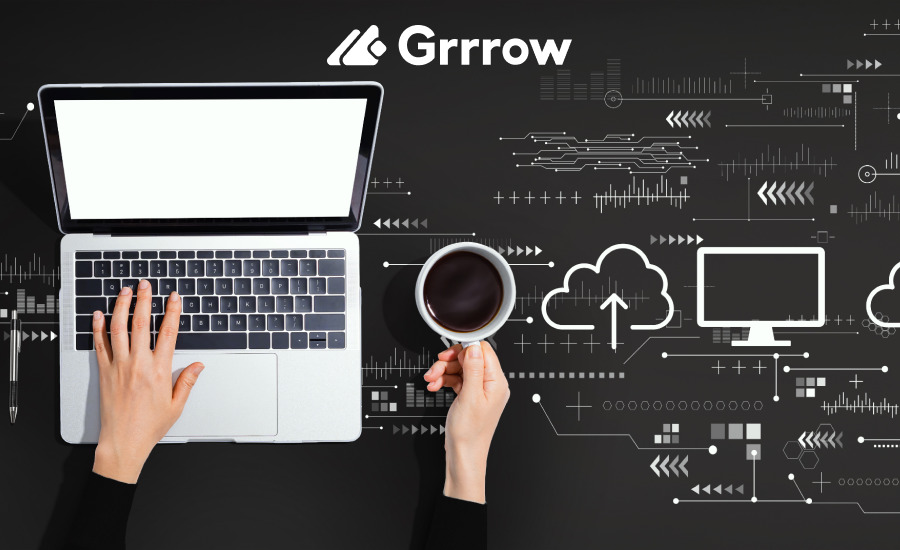Software-as-a-Service (SaaS) is a way of providing applications to users remotely over the internet instead of locally on devices. This method of software delivery allows data to be accessed from any device with an internet connection and a web browser. And the most convenient business delivery model for this method is licensing on a subscription basis. So the main source of revenue for SaaS companies is recurring payments made on a regular monthly or annual basis.
Why You Need to Track Key SaaS Metrics

From the side of marketing, the SaaS business is tricky. Companies try not to get as many one-time payments from sales as possible but to form a loyal customer base that will stay with them and continue regular payments. Due to the specifics of the sales model, SaaS marketing campaigns and strategies have to be flexible and react quickly to any SaaS market changes.
To survive in tough competition SaaS marketing teams need a massive amount of data. All the progress is achieved through regular iterations, unstoppable research, and information gathering. To understand customers and their needs it is necessary to track relevant Key SaaS metrics, analyze them and react.
What Are Key SaaS Sales Metrics And How to Calculate Them
Key SaaS metrics are benchmarks that help business to plan effective campaigns, measure their success, and make changes if something doesn’t work out. With these analytics, marketing specialists get insights into financial performance and track sales trends. What are those key SaaS metrics and how to calculate them? Let’s figure this out.
Annual Recurring Revenue (ARR)
ARR is the metric that represents the recurring revenue of the company over a year. Annual Recurring Revenue can be a significant indicator of your company’s performance over long periods of time. It allows to monitor the company’s success and measure its progress.
How to calculate your ARR
To calculate your ARR of an exact customer, divide the total contract value by the number of years of the agreement. For example, if you sell a 2-year subscription for $5000, the ARR for this sale would be $2,500.
Monthly Recurring Revenue (MRR)
MRR is similar to ARR but refers to a shorter period of time. SaaS companies usually offer a monthly subscription for their services. To plan their budget, and estimate growth rates, the information about Monthly Recurring Revenue is an essential part of the research.
If the company’s MRR is growing steadily, then the products and services are in demand in the market. If the MRR stays the same or decreases, then certain changes should be made. Often the quality of the product or lack of positive user experience can be the reason why the audience is not ready for long-term cooperation.
How to calculate your MRR
To calculate your MRR, multiply the average revenue per user (ARPU) by the number of subscribers per month. For example, if you have 10 clients on your $1,000 per month plan, your MRR will be: 10 x $1,000 = $10,000.

Churn Rates
Churn SaaS metrics allow to measure loss in customers, contracts, booking, or MRR. It is usually expressed as a rate, but can also be defined as an exact number. When we talk about churn rates we often talk about Customer Churn Rate and Revenue Churn Rate.
a) How to calculate your Customer Churn Rate
To calculate the customer churn rate, the number of customers lost in a month should be divided by the total customers at the start of the month. And then multiplied by 100.
Example: The company has 15,000 customers at the beginning of the month. Only 14,000 of these clients are still paying at the end of the month. Subtracting 14,000 from 15,000 will give the number of customers who churned, i.e. 1,000. Then the number of customers lost should be divided by the initial number of customers (1,000 ÷ 15,000 = 0,06) and then multiplied by 100%. This will give a customer churn rate of 6.6%.
b) How to calculate your Revenue Churn Rate
To evaluate the amount of churned revenue, divide the lost MMR with your total MMR at the start of the month and multiply by 100.
Example: The arithmetic is the same. If your company has a $100,000 MRR at the beginning of June, but only $90,000 MRR at the end, you lost $10,000 MRR. Divide your lost MRR ($10,000) by the amount you started with ($100,000) and then multiply by 100. Your equation should look like this: 10,000 ÷ 100,000 = 0.1 x 100 = 10% revenue churn.
These two metrics allow to efficiently analyze the financial performance of the company and make effective decisions for further growth.
Customer acquisition cost (CAC)
The cornerstone of the SaaS business model is the acquisition of new customers and it is important to analyze how much it costs to get one. CAC usually includes money spent on acquisition, marketing, and sales. This allows financial teams to plan the budget for further marketing campaigns and sales activities.
How to calculate your CAC
To calculate your customer acquisition costs, add up all the expenses spent on acquiring new customers within a period of time. This can include staff salaries, advertisement campaign expenses, costs on sales representatives, and more. Then this sum is divided by the number of acquired clients within this period.
For instance, the company spends $100,000 on marketing during the whole year. These activities brought 900 new customers. The calculation is: 100,000 ÷ 900 = 111,1. So, an average client cost the company $111.1.

Customer Lifetime Value (CLV)
The Customer Lifetime Value metric represents the amount of money an average customer will bring your company during his lifecycle. This metric allows you to determine the valuable types of customers, adjust your strategy to attract new customers, improve customer retention, and correctly allocate forces relative to current customers.
How to calculate your CLV
To calculate CLV, you’ll first need to calculate the total revenue you’ll earn from an average customer. This is made by multiplying the ARR by the number of years the customer is expected to use your product. Then it is necessary to subtract CAC. That will be your CLV.
For example, an average customer pays $150 for a yearly subscription. At the same time, customers usually stay with your company for 3 years. Your CAC costs are about $200. To calculate CLV, multiply $150 by 3 and subtract $200. Your total CLV is $250.
Conclusion
SaaS is a highly competitive industry that requires essential efforts to keep business afloat. All these key metrics are not the only way to success, but focusing on these simple calculations can save a lot of time and money. This approach can give a helicopter view of the financial health of your company, reorganize resources correctly, and build a massive base of customers. Long-term strong relationships between clients and the company are a win-win strategy for both sides.








